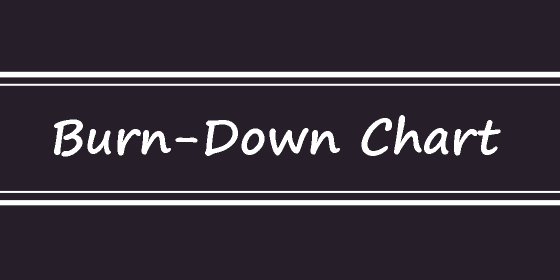Burn-down Chart

A Burn-down Chart is a graphical representation that tracks the progress of work completed by a team during a project or Sprint in Agile software development. It provides a visual indication of the remaining work versus the time available for completion. Burn-down Charts are commonly used in Scrum and other Agile methodologies to help teams monitor their progress and make data-driven decisions.
Key points to understand about Burn-down Charts:
- Y-axis (Vertical Axis): The Y-axis represents the amount of work remaining in the project or Sprint. It is typically measured in Story Points, task hours, or any other unit of work that the team uses to estimate and track progress.
- X-axis (Horizontal Axis): The X-axis represents time, usually divided into days or Sprint iterations. Each point on the X-axis corresponds to a specific time period.
- Ideal Trend Line: The Burn-down Chart may include an ideal trend line that represents the expected progress based on the team’s planned velocity. This line is a straight downward slope from the total estimated work at the beginning of the project to zero at the end.
- Actual Trend Line: The actual trend line is plotted based on the team’s daily progress. It shows the actual reduction in remaining work as the project or Sprint progresses.
- Sprint Burn-down vs. Release Burn-down: In Scrum, teams typically use Sprint Burn-down Charts to track the progress of work within a Sprint. Release Burn-down Charts track the progress of work over multiple Sprints or the entire project.
- Interpreting the Chart: A positive slope or increase in the Burn-down Chart indicates that the team is completing work at a slower rate than planned. A negative slope or decrease in the chart shows that the team is progressing faster than anticipated.
- Adaptation and Forecasting: Burn-down Charts help teams to adapt their plans and forecasts based on the actual progress and remaining work. They enable early identification of potential issues or bottlenecks.
Burn-down Charts offer several benefits to Agile teams, including:
- Transparency: Burn-down Charts provide transparency into the team’s progress, making it visible to all stakeholders.
- Early Warning: They can serve as early warning signals if the team is falling behind or if there are deviations from the expected progress.
- Facilitating Retrospectives: Burn-down Charts provide data for Sprint Retrospectives, allowing teams to identify areas for improvement and make adjustments to their processes.
By tracking their progress using Burn-down Charts, Agile teams can make informed decisions, optimize their work processes, and continuously improve their delivery speed and efficiency.